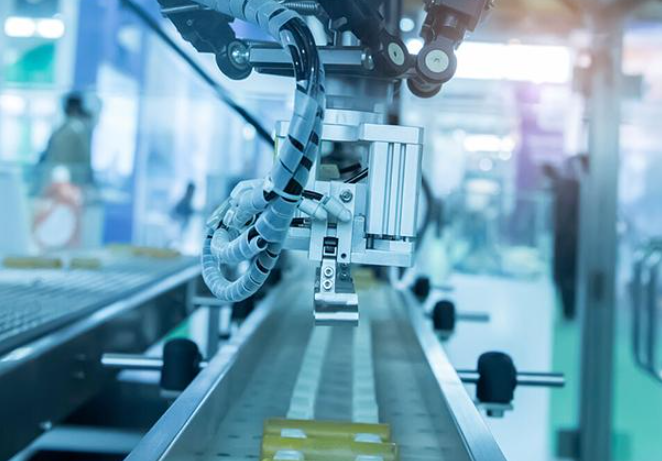3 Types of Advanced Manufacturing Technologies of Metal Materials
This article mainly introduces three kinds of advanced metal material manufacturing technologies that have developed rapidly in recent years, including additive manufacturing technology, femtosecond laser technology, and ultrasonic processing technology.

1. Additive manufacturing technology
Additive manufacturing is a manufacturing technology that integrates computer-aided design, material processing, and forming technology, and then uses special materials to stack and solidify digital model files layer by layer through software and numerical control system to manufacture solid products. That is to say, only one idea, data file, and corresponding materials are needed to realize the direct transformation from an idea to an entity.
The production cycle of additive manufacturing technology is short. Compared with the traditional metal material preparation method, additive manufacturing requires less manufacturing capacity, requires fewer operations, and is easy to operate. Moreover, additive manufacturing technology covers a small area and is convenient to carry. It can also play a role in some specific occasions. At the same time, additive manufacturing technology can perfectly reproduce the production model on 3D software, complete accurate manufacturing, realize complex structures that cannot be completed by traditional molding methods, and there is no waste after manufacturing, which improves the material utilization rate.
Because of the technical characteristics of additive manufacturing, it has attracted wide attention from all over the world, and it is possible to bring a series of profound changes to the traditional manufacturing industry. In the past few years, the manufacturing of aviation equipment parts and medical devices has always been the application place with the highest growth rate of additive manufacturing products.
However, additive manufacturing technology requires relatively high raw materials and the cost of raw materials is high. At the same time, the equipment for additive manufacturing is relatively expensive, and some key components also depend on imports, which limits the application of this technology in ordinary products. Developing low-cost raw materials and mastering key technologies to reduce equipment costs are important issues to be solved in promoting additive manufacturing technology.
2. Femtosecond laser technology
Femtosecond laser technology is composed of various forms of free and fast chemical laser, such as laser electromagnetic wave or laser pulse. Its processing duration is very short, and it has a very high instantaneous movement speed and processing power. In the processing process, the laser can easily and directly realize the fine laser processing, repair, and laser Microwave Diffraction processing of any kind of material. The laser interacts with other chemical substances in a very short fine processing duration and a very small action space, and the laser temperature within the action time range rapidly rises in an instant, And the femtosecond laser spots are removed under the action of various forms of rapid outward movement and eruption of laser plasma.
The femtosecond laser technology avoids the quality problems caused by the high-temperature thermal fusion melting process in traditional processing, and greatly reduces and effectively eliminates many other negative effects that may be caused by the high-temperature thermal effect in the traditional processing process management. It has a good application prospect in the field of ultra-fine machining and repair.
Femtosecond laser technology is still in its infancy, and a series of key technical problems need to be solved in its development and application. For example, there is no complete theory to explain the physical nature of the interaction between laser and matter under the extreme conditions of ultra-fast, ultra-short, and ultra-strong; Increase investment in the production of femtosecond lasers and micromachining systems to further miniaturize their size; Improve the working environment of micromachining and prolong its life; According to the characteristics of femtosecond laser micromachining and the properties of the materials to be processed, the software of the model design is developed to simulate and simulate the processing process and realize the optimal parameter processing.
3. Ultrasonic machining technology
Ultrasonic machining is a special machining method that uses ultrasonic frequency to vibrate with small amplitude, and through the hammering action of the abrasive in the liquid between it and the workpiece on the machined surface, the surface of the workpiece material is gradually broken. It has unique advantages in cutting, wire drawing dies, deep hole processing, and other fields. Ultrasonic machining has developed rapidly in recent decades, especially in the field of difficult-to-machine materials, it has solved many key technical problems and achieved good results.
Ultrasonic machining has gradually become an important means to improve the energy efficiency of machining. From the perspective of the application industry, ultrasonic machining is mainly applied to 3C, aerospace, national defense, and military industry, and 5g new materials. In the aerospace field, the product quality requirements are high. Important materials such as carbon composites and carbon fibers have excellent characteristics such as high strength, low density, ultra-high temperature resistance, and corrosion resistance. However, their high strength, high elastic modulus and wear resistance are difficult to process, difficult to cut, easy to collapse, and fast tool wear. Ultrasonic machining can reduce the tool load, improve the burr phenomenon and improve the machining quality and efficiency.
With the improvement of machining quality and demand for new materials, difficult to machine materials, difficult to machine structures and surfaces, and the combination of ultrasonic machining with EDM, ECM, cutting machining, and grinding machining to form composite machining, ultrasonic machining will have a broader application prospect in improving machining efficiency and quality.
